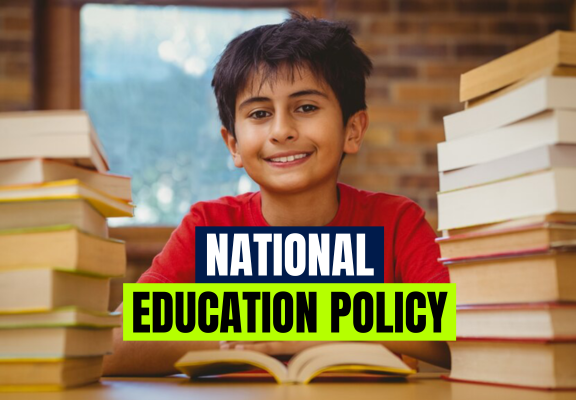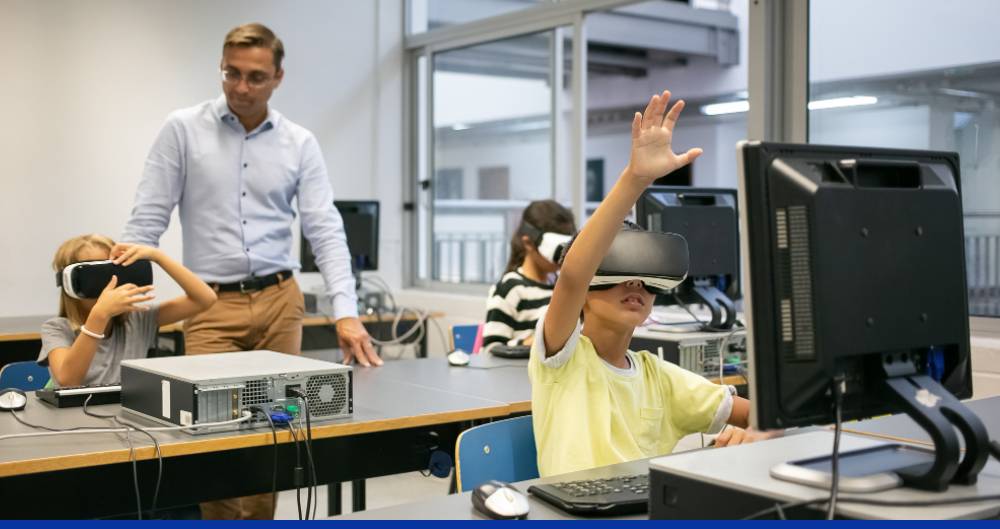
India’s National Education Policy (NEP) 2020 marks a significant milestone in the country’s education landscape, aiming to revolutionize the way knowledge is imparted and acquired. With a vision to transform India into a global knowledge superpower, the NEP introduces sweeping reforms across all levels of education, from early childhood to higher education. In this blog, we delve into the key provisions of the National Education Policy (NEP), examining its potential benefits and challenges as India charts a new course in education.
Pros of the National Education Policy (NEP)
Holistic and Multidisciplinary Learning:
– The National Education Policy (NEP) emphasizes a shift towards holistic and multidisciplinary learning, breaking down rigid subject boundaries to foster creativity, critical thinking, and problem-solving skills among students.
– By integrating arts, humanities, sciences, and vocational subjects into the curriculum, the NEP promotes a well-rounded education that prepares students for the complexities of the modern world.
Early Childhood Education and Foundational Literacy:
– Recognizing the importance of early childhood education, the NEP prioritizes universal access to quality pre-primary education for all children aged 3 to 6 years.
– The policy places a strong emphasis on foundational literacy and numeracy skills, aiming to ensure that every child achieves basic proficiency in reading, writing, and mathematics by Grade 3.
Flexible Curriculum and Assessment Reforms:
– The NEP advocates for a flexible curriculum framework that empowers students to choose from a wide range of subjects and electives based on their interests and aptitudes.
– Assessment reforms under the National Education Policy (NEP) aim to move away from rote memorization and high-stakes examinations towards competency-based assessments that focus on holistic development and practical skills.
Technology Integration and Digital Learning:
– Leveraging the power of technology, the National Education Policy (NEP) seeks to integrate digital tools and resources into teaching and learning processes, enabling personalized and interactive learning experiences.
– The policy promotes the use of digital platforms for teacher training, content delivery, and educational administration, aiming to bridge the digital divide and enhance access to quality education, especially in remote and underserved areas.
Vocational Education and Skill Development:
– With a focus on enhancing employability and entrepreneurship, the NEP emphasizes the integration of vocational education and skill development programs into mainstream education.
– By offering vocational courses and apprenticeships from the secondary level onward, the policy seeks to equip students with practical skills and industry-relevant competencies, ensuring smooth transitions to the workforce or higher education.

Cons of the National Education Policy (NEP)
Implementation Challenges and Resource Constraints:
– One of the primary challenges facing the National Education Policy (NEP) is the effective implementation of its ambitious reforms across diverse socio-economic contexts and educational settings.
– Resource constraints, including funding shortages, inadequate infrastructure, and shortage of qualified teachers, pose significant barriers to the successful execution of the NEP’s objectives.
Language Policy and Regional Disparities:
– The NEP’s language policy, which advocates for the use of the mother tongue or local language as the medium of instruction up to Grade 5, has sparked debates and concerns, particularly in multilingual and diverse regions.
– Critics argue that enforcing a uniform language policy may overlook the linguistic diversity and cultural identities of different regions, potentially disadvantaging students from non-dominant language backgrounds.
Standardized Testing and Assessment Burden:
– While the National Education Policy (NEP) aims to reduce the emphasis on standardized testing and rote learning, concerns remain about the potential burden of continuous assessments and examinations on students and teachers.
– Critics caution against over-reliance on assessment metrics and performance indicators, which may inadvertently promote teaching to the test and undermine creativity and innovation in the classroom.
Digital Divide and Access to Technology:
– Despite the push towards digital learning and technology integration, the digital divide remains a significant challenge, particularly in rural and marginalized communities with limited access to internet connectivity and digital devices.
– Ensuring equitable access to technology and bridging the digital divide is essential to prevent widening disparities in educational opportunities and outcomes under the National Education Policy (NEP).
Inclusive Education and Special Needs:
– While the NEP emphasizes inclusive education and support for students with special needs, critics argue that the policy’s implementation framework lacks concrete measures and resources to address the diverse needs of learners with disabilities.
– Adequate provisions for accessible infrastructure, assistive technologies, trained special educators, and inclusive pedagogical practices are essential to ensure the meaningful inclusion of all students in the education system.

Conclusion
India’s National Education Policy (NEP) 2020 holds the promise of a transformative journey towards a more inclusive, flexible, and future-ready education system. While the policy’s ambitious reforms offer immense potential to enhance learning outcomes, promote innovation, and empower learners, addressing implementation challenges and mitigating potential drawbacks will be crucial for realizing its full impact. By fostering collaborative partnerships, investing in capacity building, and prioritizing equity and inclusion, India can harness the opportunities presented by the NEPto shape a brighter future for generations to come.






